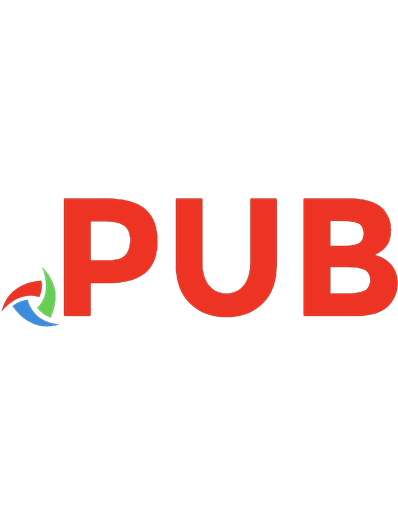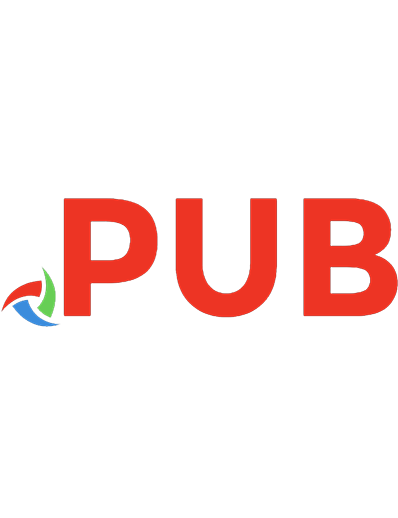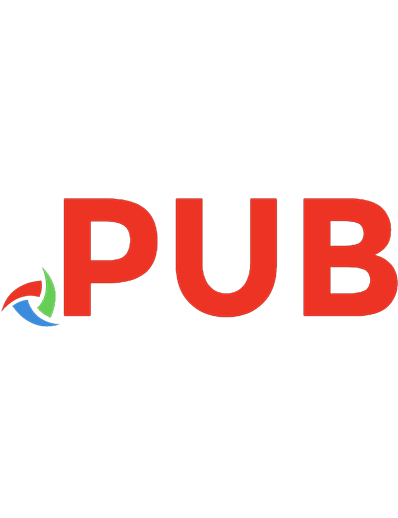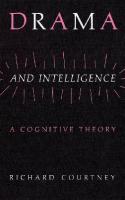How to Build a Theory in Cognitive Science 0791428850, 0791428869
128 20 12MB
English Pages 263 Year 1996
Polecaj historie
Citation preview
How TO BuILD
A THEORY IN COGNITIVE SCIENCE
SUNY series in Philosophy and Biology David Edward Shaner, Editor
How TO BuILD
A THEORY IN COGNITIVE SCIENCE
Valerie Gray Hardcastle
STATE UNIVERSITY OF NEW YORK PRESS
Chapter 5 is based on "Reduction, Explanatory Extension, and the Mind/Brain Sciences," Philosophy of Science 59 (1992): 408-428, by permission of Philosophy of Science. Figure 3.1 is reprinted from T. J. Sejnowsk.i and P. S. Churchland (1988) "Brain and Cog nition." In M. I. Posner (ed.) Foundations of Cognitive Science. Cambridge, MA: MIT Press, pp.301-356, with permission of the publisher.. Figures 3.4 and 3.5 are reprinted from W. Heilingenberg and G. Rose (1985) "Neural Correlates of the Jamming Avoidance Response (JAR) in the Weakly Electric Fish Eigen mannia," Trends in Neuroscience 8(10): 442-449, with permission of TINS and the authors . Published by State University of New York Press, Albany © 1996 State University of New York All rights reserved Printed in the United States of America No part of this book may be used or reproduced in any manner whatsoever without written permission. No part of this book may be stored in a retrieval system or transmitted in any form or by any means including electronic, electrostatic, magnetic tape, mechanical, photocopying, recording, or otherwise without the prior permission in writing of the publisher. For information, address the State University of New York Press, State University Plaza, Albany, NY 12246 Production by Kay Bolton Marketing by Nancy Farrell Library of Congress Cataloging-in-Publication Data Hardcastle, Valerie Gray. How to build a theory in cognitive science / Valerie Gray Hardcastle. p. cm. - (SUNY series in philosophy and biology) Includes bibliographical references and index. ISBN 0-7914-2885-0 (alk. paper). - ISBN 0-7914-2886-9 (pbk. alk. paper) 1. Philosophy of mind. 2. Philosophy and cognitive science. 3. Functionalism (Psychology) 4. Reductionism. 5. Cognitive science-Philosophy. I. Title. II. . Series. BD418.3.H37 1996 128' .2-dc20 10 9 8 7 6 5 4 3 2
95-46981 CIP
For Gary
Digitized by the Internet Archive in 2022 with funding from Kahle/Austin Foundation
https://archive.org/details/howtobuildtheory0000hard
CONTENTS Acknowledgments Chapter 1
Cognitive Science Is Not Cognitive Psychology
Chapter 2 The Dilemma of Mental Causality
lX
1 13
Mental States as Higher Level Properties I 15 Privileged Regularities and Ceteris Paribus Clauses I 18 Screening off Causes I 24 Ignoring the Realism!Antirealism Debate I 29
Chapter 3 Hierarchies in the Brain
33
The Neuron I 34 The Methodological Individualism/Anti-Individualism Debate I 36 Hierarchies in Neuroscience I 41 «Privileged" Causality in Neuroscience I 54 Explanation in Cognitive Science I 60
Chapter 4 Computationalism and Functional Analysis: A Pragmatic Approach
63
Formal Accounts of Computationalism I 64 Computational Satisfaction and True Computation I 69 Functionalism and Functional Analysis I 71 Philosophical Functionalism I 73 An Example I 75 The Function/Structure Distinction I 79
Chapter 5 Reductionism in the Cognitive Sciences
85
Reductionism in Philosophy of Mind I 86 Arguments against Reductionism I 88 Cognitive Theories of Emotion: A Test Case I 91 Explanatory Extension I 95
Vll
Vlll
Chapter 6
HOW TO BUILD A THEORY IN COGNITIVE SCIENCE
The Dual Memory Hypothesis and the Structure of Interdisciplinary Theories
105
Developmental Studies for a Dual Processing System I 106 The Distinction between Implicit and Explicit Memory I 111 Neural Evidence for the Dual Memory Hypothesis I 121 The Theoretical Framework I 131 «Two-Part" Interdisciplinary Theories I 132 Putting It All Together I 138 Chapter 7
Interdisciplinary Theories and Bridge Sciences: The Case of Event Related Potentials
14 1
The Challenge I 143 ERPs I 146 The Timing of Priming I 150 Bridge Sciences I 169 Appendix: Cognitive Science and the Semantic View
175
Notes
181
References
205
Index
24 1
ACKNOWLEDGMENTS I owe many thanks to many people without whom this book would not have appeared. First and foremost, I am tremendously indebted to my husband Gary, to whom this book is dedicated. He gave me the emo tional and intellectual space to do this project, even though his personal cost for doing so was great. I hope this book measures up to the sacrifice. Bits and pieces of this book in various versions were read by John Bickle, Jerry Doppelt, Michael Dietriech, Marjorie Grene, Gary Hard castle, Todd Jones, Patricia Kitcher, Philip Kitcher, Jim Klagge, Dan Lloyd, Sandy Mitchell, Lenny Moss, Helen Neville, Peter Pruim, Adina Roskies, and Oron Shagrir. I appreciate all of their comments and wor ries. The remaining errors are mine. The empirical research reported in chapter 7 was carried out cour tesy of Dr. Helen Neville and her wonderful lab at the Salk Institute. Without her help and the patient instruction of Sharon Corina, Marg aret Mitchell, and Chris Weber-Fox, I would not have been able to do such an interesting project. Besides, the Neuropsychology Lab is a ter rific place to raise children, as mine were. A shorter version of chapter 3 was read at the 1993 conference for the International Society of the History, Philosophy, and Social Studies of Biology, and an earlier and much shorter version of chapter 4 was read at the 16th Annual Wittgenstein Symposium in Kirchberg, Austria; a variation on this theme was also presented at the 1994 Philosophy of Science Association Conference in New Orleans. The empirical results were presented at the 1993 meeting of the Southern Society for Philos opohy and Psychology in New Orleans. My thanks to the participants for their suggestions and discussion. Research for this book was supported in part by a fellowship from the American Association for University Women, two summer stipends from the McDonnell-Pew Foundation for Cognitive Neuroscience, a research assistantship from the Philosophy Department at the Univer sity of California, San Diego, a research grant from the College of Arts and Sciences here at Virginia Tech, and a research grant from Virginia Polytechnic Institute and State University. lX
X
HOW TO BUILD A THEORY IN COGNITIVE SCIENCE
Finally, I thank Kay Bolton and the editorial staff at the State Uni versity of New York Press for their help and patience; David Shaner, the editor of the Philosophy and Biology Series, for his encouragement; and Karen Snyder, our departmental secretary (and much more), for always knowing how to get me out of my difficulties.
Chapter 1
Cognitive Science Is Not Cognitive Psychology Information-processing theories of the cognitive mind/brain can explain certain features of cognition that cannot be explained by means of lower level neu roscien tific accounts. 1 Suppose that a neuroscientist has .. . arrived at your campus for a lecture. You eagerly ask him, «Tell me, Professor X, when your subject Joe images a small pine tree at an angle in the center of his imagistic 'field', what is going on at the neural level that explains the intentionality of Joe's imaging?" Professor X consults his table of psychoneural correlations and replies, in deep, serious tones: 'Tm so glad you asked that. The explanation is simple. When Joe exercises his imaging capacity in that way his brain is moving form neural state N 624 to neural state N 1009 ." «Thank you, sir: that's very enlightening ," you reply, as your mind draws a complete blank. 2
This project opens with a series of biases and reactions. The most imme diate and obvious is that the brain is quite important in understanding cognition. Indeed, I would daresay that the brain sciences are an essen tial component in a mature cognitive science. For those not well acquainted with the recent history of debates among some philosophers and psychologists over the nature of cognition, this may seem a pretty uninteresting and weak claim. How else do we think but with brains? On the other hand, for those intimately acquainted with recent dia logues, dialectics, and diatribes, my ((bias" might appear almost hereti cal: one should not confuse the hardware with the software, as it were.
2
HOW TO BUILD A THEORY IN COGNITIVE SCIENCE
And certainly one should not embrace one for the other with full knowledge of forethought. My second bias, which will turn out to be tied to my first, is that the ories in cognitive science are strongly interdisciplinary. Cognitive sci ence is not just cognitive psychology with a few additional bells and whistles. The corollary to this claim is that one should not conflate ped agogical issues in teaching cognitive science to neophytes ( e.g., how best to present the material in an orderly manner) with the actual products of research by our scientific communities, who pay little mind to whether their discoveries and conclusion are palatable to those on the outside. I doubt that anyone would claim to find this bias even remotely controversial. Nevertheless, those who deny my first bias are quite often guilty (at least in their actions) of also denying the second. Allow me to explain. Early writings in the philosophy of mind and the cognitive sciences stress two fundamental notions. First is that species of thought are spe cies of information processing construed as formal symbol manipula tions. Allen Newell and Herbert Simon are credited with the insight that the mind can be formally construed as a symbol-manipulating system. 3 They argue that we can describe human behavior by "a well-specified program, defined in terms of elementary information processing." (See table 1. 1 for a general description of this sort of information-processing system.) As an instance of a Turing Machine, this general system has only a few primitive capacities but is an extraordinarily powerful machine. It can store (and recall) symbols and create new symbols to stand for those symbol structures. It can compare tokens of symbols and then classify them as the same or different. However, the most important capacity of this machine, and the capacity that gives it its true power, is its ability to act contingently-it can execute different infor mation processes, depending on which symbol structure it encounters. In this way, the machine can respond to context. Using structures built out of symbols, it can designate environmental events and its own pro cesses, on which it then bases its responses. This information-process ing system became the dominant model for the human mind in psy chology and elsewhere after Neisser's classic ( 1967) work, Cognitive Psychology, which incorporated many of these ideas. The second defining idea is that formally described systems are multiply instantiable. As far as I know, Putnam ( 1960) first remarked on this fact in the context of studying the mind. He argued that the formal definitions of processes in the cognitive sciences describe events that we
Cognitive Science Is Not Cognitive Psychology
3
Table 1.1 Postulates for a General Information Processing System ( 1) A set of symbolic tokens connected by a set of relations makes up a "symbol structure," which is stored and retained in some memory register or other.
(2) If a symbol's designation is fixed by an elementary information process or by the external environment, then it is "primitive." (3) These symbol structures then act as either inputs or outputs (or both) for an "information process."
( 4) The symbol structures refer to objects if information processes that take the symbol structure as output, either: A. affect the object itself, or B. produce symbol structures that depend upon the object. (5) An information processor has three basic components:
A. a fixed set of elementary information processes; B. a short-term memory register that holds the input or output symbol structures of the elementary information processes; C. an interpreter which, as a function of the symbol structures in short-term memory, determines the sequence of the elementary information processes to be executed by the information processing system. ( 6) The symbol structure is a "program" A. if the object a symbol structure designates is an information process and, B. if given the proper input, an interpreter can execute the process.
can conceive solely in terms of input, output, and various functional or causal relations. 4 Minds just are (or can just be conceived as) things that exhibit the appropriate cause relations. Consider a mousetrap for an analogous example. What counts as a mousetrap is something that takes in a live mouse and then turns out a dead one. Mousetraps can be built out of just about any substance. If we ask what unites all legitimate token mousetraps under that type, no answer can be given in terms of under lying physical substances. Mousetraps can be made out of wood, metal springs, poison, plastic, baseball bats, and so on. What unites these objects is not the stuff from which they are made, but the purposes they serve. They all deliver dead mice when given live ones. Hence, we under stand mousetraps just in terms of inputs, outputs, and certain relations between them.
4
HOW TO BUILD A THEORY IN COGNITIVE SCIENCE
These sorts of formal or functional definitions in science contrast with understanding objects or properties in terms of some developmen tal history. For some things, how they got to be here is important for understanding what they are. These are things that cannot be understood purely formally. For example, the property of being a codependent is not formally defined. In brief, a codependent is someone who supports addictive personalities. But the causal relations that codependents enter into might not differ much from those who are not codependent, or might not be distinguishable from the relations of noncodependents, were it not for the codependent's particular history. Codependents typ ically engage in solicitous behavior, usually with respect to people in trouble whom they care about, and this behavior helps boost a codepen dent's self-worth. Insecure kind people act in the same way. What makes codependents codependent is not their behavior per se, but the history of their relationships that leads them to act in this way. The purely formal approach to mentality tells us that we could con ceivably find minds comprised of appropriately connected neurons, or silicon chips, or zinc, or some alien substance. Since these definitions say nothing about the ontological status of mental events, the same type of mental state could be realized in any number of underlying things, and they would all count as tokens of that type as long as they give the correct outputs for specified inputs and maintain appropriate causal connections with other mental states. In other words, the study of mind is analogous to the study of mathematics: neither requires an actual, physical instantiator to get the study underway. There is a strong methodological advantage in adopting this per spective. If we can define mental states in terms of inputs, outputs, and causal relations, then we have an easy way (relatively speaking) to explore the implications of particular theories: computer simulation. If the underlying stuff does not impact the relations under study, then the oretically at least we could design computer programs to mimic the hypothesized causal relations to test whether our model gives us the outputs we expect for the inputs we choose. Compare this project with computer simulations of the weather. The variables that figure into determining the weather for any particular day are enormously complex; it is exceedingly difficult for any human to track them all. But we can devise computer programs that calculate the values for all the variables and their interactions for each iteration of time. These programs map the weather with an extraordinary degree of precision, at least for a few days. Something similar should be avail-
Cognitive Science Is Not Cognitive Psychology
5
able for human cognition. In real life there are simply too many contin gencies for scientists to be able to test their simple theories. Even in the fairly constrained environment of a laboratory in which subjects are only given a few inputs at a time, interactions with things that scientists cannot control can easily swamp the effects that they are trying to test. But with computer simulations, we can control all the inputs a system receives. Though these systems would then only mimic aspects of cog nition, they still present a powerful tool for testing hyp otheses in addi tion to laboratory work. Moreover, computers can track exceedingly complicated causally interactive algorithms in ways that we cannot. Computers give us one easy and relatively inexpensive path for exploring rough and ready new ideas about how our mental states interact before designing time-con suming and expensive laboratory experiments. Explaining mental states in terms of their causal interactions radically expands the possibilities we have for exploring and testing hyp otheses and theories of mental cognition. These two assumptions taken together, that the mind can be under stood as a formal symbol manipulating device and that "mental pro grams" can be multiply instantiated, led many early on to conclude that the underlying instantiating stuff was simply unimportant. 5 Nowadays, however, even the staunchest "formalists" would agree that the brain sciences can be useful in understanding cognition. Not surprisingly, they concede that studying the brain may tell us something about the program that it is running. In fact, the rise of neural net modeling6 in conjunction with con crete results from neuroscience regarding how minds actually work demonstrated three important facts to cognitive science. ( 1) We can model brains purely computationally at a lower level of organization than originally envisioned. This opened the question of the appropriate level of analysis for mental systems, something that had previously been taken more or less for granted. This topic is pursued in chapters 2 and 3. (2) How we actually work differs quite often from the strategies var ious computers use in solving problems. These differences become important not only for therapeutic reasons, but also because cognitive science at bottom is a science about us. Computers comprise but one tool among many we use to divine the basic principles behind thought. This theme is echoed in chapters 6 and 7. (3) It is quite difficult and arti ficial to separate the study of one domain from another, since every thing influences just about everything else in the brain. Hence, the ways
6
HOW TO BUILD A THEORY IN COGNITIVE SCIENCE
in which we had originally carved our cognitive capacities up for study might be mistaken. This point is discussed in chapter 5. The point of disagreement between myself and others is over how useful the brain sciences are and in what respects. I believe that these facts hugely alter the face of cognitive science. However, my reading of the current state of affairs is that many philosophers of mind have sim ply tacked neuroscience onto their list of what counts as a cognitive sci ence without fundamentally reorganizing their notions of the field. 7 That is, their realization of the three points listed above, plus perhaps only a rudimentary knowledge of neuroscience, have led them merely to add an entry on computational neuroscience to their mental lexicon. This, I think, is a mistake. What they have done mimics the currently popular textbooks in cognitive science.8 In these books, we find chapters devoted to compu tation, language, reasoning, attention, memory, artificial intelligence, and psychological development, as well as a chapter on neuroscience (usually on vision, and usually the last chapter) . Pedagogically, it makes sense to break the study of the mind into these (or similar) categories, since historically each has been studied separately, and each has devel oped under different research paradigms. It is simply easier to learn piecemeal. However, thinking of the theories of cognitive science or its subject matter in this compartmentalized manner is not prudent. For all of these topics are intimately related, and all (for us) are related to the brain. It is simply a mistake to reduce meaningful symbols to formal patterns (to reduce semantics to syntax) and then remove those patterns from their culture, history, and biology. We are living, interactive crea tures. We are designed to move through this world, seeking food and mates and avoiding predators and other painful things. Any science that purports to study some aspect of us has to take these facts into consid eration. My point is that we cannot (or perhaps, should not) detach an organism's cognition from the animal's strategy for survival within par ticular ecological environments. Despite the claims of the early serial models, nervous systems are not general purpose computers; they evolved to accomplish a certain range of specific tasks and their archi tecture supports those tasks. We all know this, and yet, the early von Neumann models push us toward pretending that the brain essentially is in the symbol manipulation business. But if we consider the brain from a more biologically realistic perspective, we can see that nervous
Cognitive Science Is Not Cognitive Psychology
7
systems are designed to move organisms appropriately in their environ ment. As evolutionary biologists are fond of pointing out, nervous sys tems enable organisms to succeed in the four F's: feeding, fleeing, fight ing, and reproducing. 9 I can give no serious argument for why I think this sort of bias toward the neuroscientific study of the mind/brain is superior, but adopting this perspective does offer several advantages. For example, the general organization of the brain makes sense if we assume that the nervous system exists for creating motor output. The cerebellum, an area crucially involved with motor control, 10 is connected almost directly to all areas of the brain. (See figure 1. 1.) It inputs into sensory transmissions at all levels. It is connected to our reticular activating sys tem, the system that controls arousal and attention. It is also connected via the thalamus to the basal ganglia and forebrain. With these connec tions, the cerebellum could alter the frontal cortex-basal ganglia inter actions. Finally, it is connected to the hippocampus, the area responsi ble for laying down episodic memories, and via its connections to the hippocampus, it inputs to, and receives output from, the limbic system. Not only can' our










